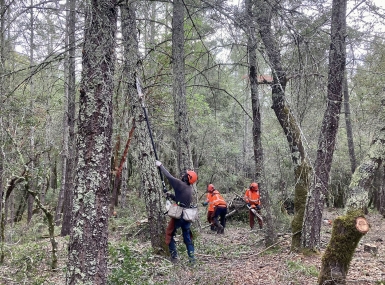County Explorer Updates: Visualizing County Jail Population Data
Upcoming Events
Related News

How many people are in jail, what are the characteristics of the jail population and how do the characteristics of the jail population change from year to year?
The Department of Justice Bureau of Justice Statistics (BJS) provides some help with answering these questions. Each year, BJS releases the findings from the Annual Survey of Jails. The survey provides national numbers on the jail population.
There are more than 2,800 jail jurisdictions in the United States, and BJS sends the survey to a representative sample of these jurisdictions. Jail facilities can be administered by county governments, cities, regional authorities where two or more jurisdictions have an agreement to operate the facility, or private contractors. BJS makes available the data collected by the survey. The most recent data made available to the public were collected in 2013.
NACo analyzes the BJS survey data for county governments to update the County Explorer, an interactive map available for free via the NACo website. For September, the update to County Explorer includes the number of persons held in county jails for non-local law authorities and jurisdictions.
In addition to holding inmates who are awaiting trial locally or have been sentenced to serve time in the county jail, county jails also hold inmates for federal agencies and other jurisdictions. NACo’s analysis of BJS data shows that in total, 18 percent of the inmate population confined in county jails is held for the federal government, prison authorities and other local jurisdictions.
Sixty percent of county jails confine one or more individuals for the U.S. Marshals Service, Federal Bureau of Prisons, U.S. Immigration and Customs Enforcement or other federal agencies. An additional 60 percent of county jails also hold inmates for their state’s corrections department. County jails hold more inmates for their states’ prisons than for federal agencies. Inmates in county jails are also held for other counties from within the state and authorities in other states.
To view the recent jails data added to County Explorer, go to http://explorer.naco.org/ and click on “Map an Indicator” on the upper left side of the screen. A menu with different categories will appear. Move the cursor over “Justice and Public Safety.” A list of options appears to the right that includes “Jails – Supervised Population by Agency.” Click an indicator that is of interest, such as the number of inmates “Held for Own State.”
This month’s update to County Explorer follows August’s additions, which included data on jail capacity, the number of people in jail and the average daily population.
Attachments
Related News

FEMA halts disaster mitigation grant program
On April 4, the Federal Emergency Management Agency (FEMA) announced it will not allocate $750 million this year for the Building Resilient Infrastructure and Communities (BRIC) grant program. According to the press release, FEMA will also stop funding BRIC projects that were previously approved and are still underway.

Counties support youth with a second chance opportunity
A Riverside County, Calif. supervisor took experiences from his former life as a teacher to help create a program that serves students who had gone the juvenile justice system and were looking for a second chance.

White House signs executive order examining state and local preparedness
On March 18, President Trump signed an Executive Order aimed at aligning federal preparedness and response doctrines, while examining state and local preparedness capabilities. The order does not shift any responsibilities or costs to state and local governments, rather producing a set of recommendations for better collaboration across all levels of government.